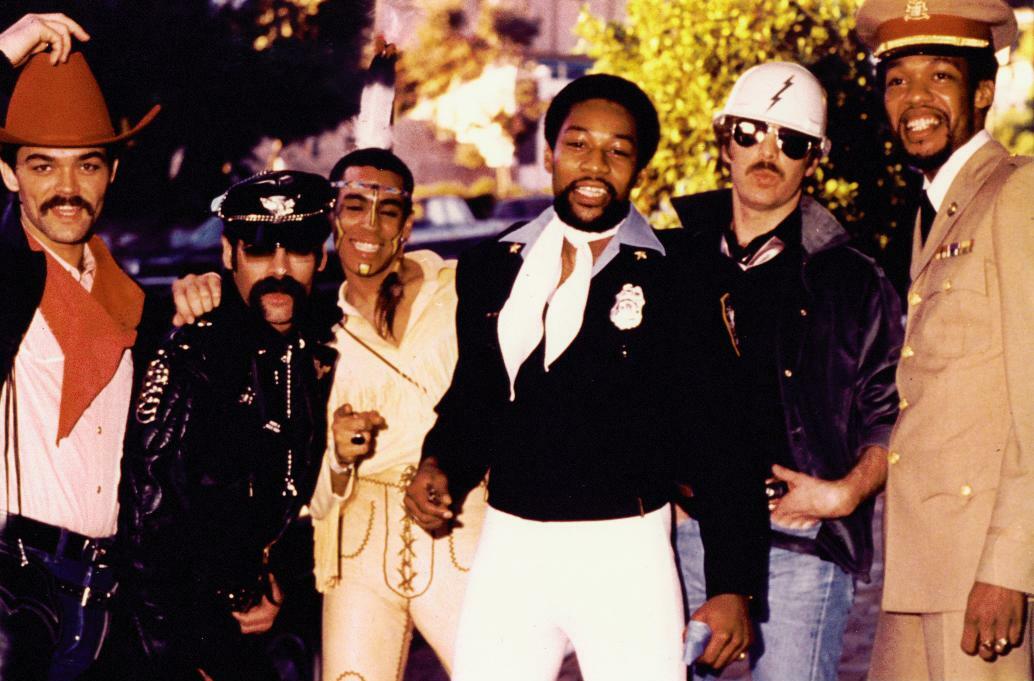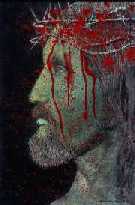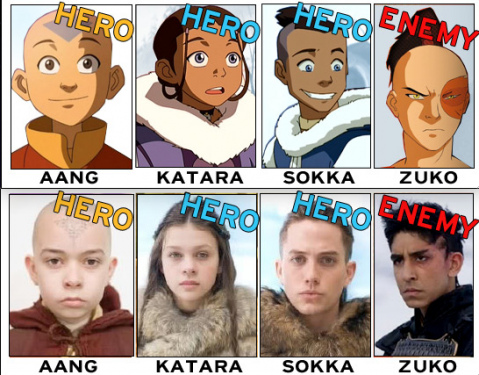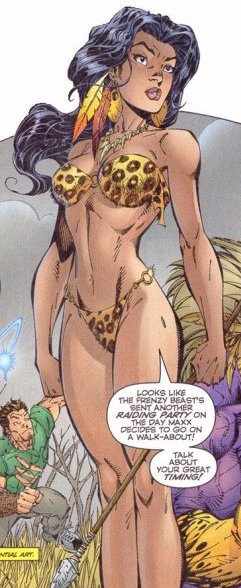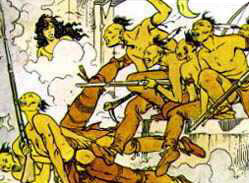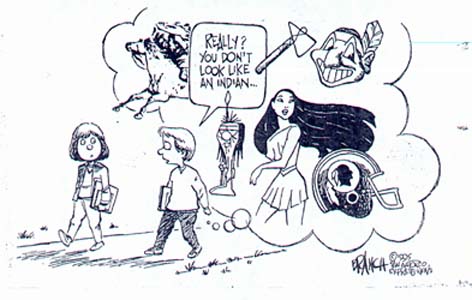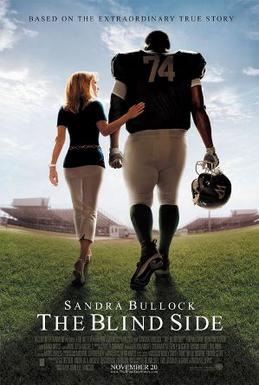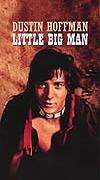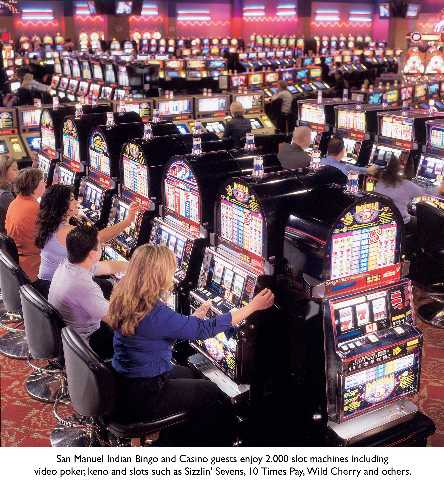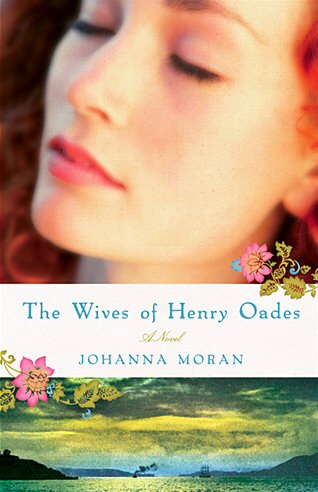In his Stuff White People Do blog, Macon D. recently analyzed people who
pose in cowboy drag. First he quotes Mel at BroadSnark, who perfectly encapsulates America's lust for its cowboy myth:
White America's Existential CrisisThere is a certain segment of the American population that really believes in the American foundational myths. They identify with them. They believe that America was built by a handful of white, Christian men with exceptional morals. Their America is the country that showed the world democracy, saved the Jews in World War II, and tore down the Berlin wall.
These people have always fought changes to their mythology. They have always resented those of us who pushed to complicate those myths with the realities of slavery, Native American genocide, imperial war in the Philippines, invasions of Latin American countries, and secret arms deals.
And we have been so busy fighting them to have our stories and histories included in the American story that we sometimes forget why the myths were invented in the first place.
No myth illustrates the sleight of hand behind our national mythology quite like the myth of the cowboy. In the mythology, the cowboy is a white man. He is a crusty frontiersman taming the west and paving the way for civilization. He is the good guy fighting the dangerous Indian. He is free and independent. He is in charge of his own destiny.
Of course, the real cowboy was an itinerant manual laborer akin to today's illegal immigrant. He didn't protect schoolmarms from outlaws, Indians, and other uncivilized animals. He did the dirty work of handling a smelly herd of cows.
From Pilgrims to cowboysWe can trace our national hero figure from the Pilgrim to the Minuteman to the frontiersman (Daniel Boone, Davy Crockett, Kit Carson, et al.). But how exactly did a cow handler become the next in line? Why not a farmer, rancher, surveyor, prospector, railroad man, oil driller, inventor, or someone else?
No doubt the
usual tangle of dime novels, Wild West shows, and old Western movies played a role. But Macon D. of Stuff White People Do steers us to another source. In
Rough Rider in the White House: Theodore Roosevelt and the Politics of Desire, author Sarah Watts argues that Teddy Roosevelt turned the bovine's best friend into a John Wayne/Clint Eastwood tough guy:
Roosevelt emerged as a central purveyor of the cowboy-soldier hero model because he more than any man of his age harnessed the tantalizing freedom of cowboys to address the social and psychological needs that arose from deep personal sources of frustration, anxiety, and fear. More than any other he sensed that ordinary men needed a clearly recognizable and easily appropriated hero who enacted themes about the body; the need for extremity, pain, and sacrifice; and the desire to exclude some men and bond with others. In one seamless cowboy-soldier-statesman-hero life, Roosevelt crafted the cowboy ethos consciously and lived it zealously, providing men an image and a fantasy enlisted in service to the race-nation.
In keeping with changing models of masculinity ... mass-circulation magazines began to feature a Napoleonic "idol of power," a man of action who used iron will and "animal magnetism" to crush his rivals and dominate nature. Biographers of plutocrats and robber barons encouraged readers to envision themselves in a social Darwinist world of ruthless competition where character alone appeared effeminate and sentimentalism dangerous. Earlier notions of manliness had counseled reason over passion; now the hero must unleash his "forcefulness."
Enter a new type of charismatic male personality after 1870, a cowboy-soldier operating in the new venue of the American West on sheer strength of will and physicality. Eastern readers instantly recognized him as more masculine precisely because he met the psychological desires in their imagination, making them into masters of their own fate, propelling them into violent adventure and comradeship, believing them at home in nature, not in the hothouse interiors of office buildings or middle-class homes.
Writers pitched the cowboy ethos against Christian values of mercy, empathy, love, and forgiveness, against domestic responsibility and the job demands that complicated men's lives and dissolved their masculine will. The cowboy was not interested in saving souls or finding spiritual purity or assigning meaning to death. His code of conduct arose as he struggled against the overwhelming wildness of men and beasts and carved out a prairie existence with guns, ropes, and barbed wire. Readers suspended ordinary morality as they fantasized about life at the margins of civilization and sampled forbidden pleasures of taming, busting, subduing, shooting, hanging, and killing.
No doubt Americans venerated Custer, Buffalo Bill, and other Western figures for similar reasons. But I'm willing to believe
Roosevelt did more than anyone to popularize the cowboy ideal among the Eastern intelligentsia. Once they bought into the myth, it became our national storyline.
A century of cowboysSince then,
our heroes have generally fit into the cowboy mold. I.e., the
rugged individual who lives by his own rules. Whether the figure is a cop, soldier, spy, race-car driver, pilot, spaceman, or president, he's basically a transplanted version of the American cowboy.
We could cast our recent political conflicts in cowboy terms too. Nixon and Carter weren't cowboy enough to handle their respective crises. Reagan and Bush Jr. obviously
were cowboy enough to handle theirs.
"Real" cowboys don't let women, gays, or foreigners fight their battles for them. They take charge because it's only natural that "a handful of white, Christian men with exceptional morals" should rule. It was true of the
Pilgrims and
Founding Fathers, Americans believe, and it's still true today.
Finally, Mel of BroadSnark explains how this myth-making process has come up lame, like a horse throwing its rider, leading to white America's existential crisis:
When you know the real history of the cowboy, it makes the selling of Reagan and Bush as cowboys seem like an inside joke. The mythological cowboy is the heroic figure that many Americans wish they were. The fact that the cowboy was actually an exploited worker is virtually unknown.
When Americans vote for a president, they want to see that heroic version of themselves looking back at them. They want to see that free cowboy of the mythology. No matter how poor or exploited white people were, they could always take subconscious comfort in the fact that, when they looked at the highest power in the land, they saw an idealized version of themselves.
And then came Barack Obama.
Pop.
It’s a powerful thing to be able to identify with the people who are your leaders, to feel like they are one of you. It’s a feeling that many people in the United States felt for the first time when Barack Obama was elected. It’s equally powerful when your elected leaders are clearly not like you, when the fact that they do not represent you is glaringly obvious.
I had my whole life to get used to the idea that the government was never made to really represent my interests. Many of these angry people are the very white, Christian, men that this country was supposedly built by and for. And this is the first time the myth of America has been unmasked for them.
Exactly. Obama is liberal, intellectual, and black. He doesn't fit the cowboy mold in any way. Yet Americans elected him over the doddering white war hero, John McCain. How could that be?
This can't happen in America, the legion of losers thinks. Cowboys can't let the presidential equivalent of a schoolmarm rule them. So we get the Tea Party movement claiming there's a conspiracy to overthrow democracy. This plot is led by a foreign Muslim terrorist who can't or won't produce a birth certificate. We have to take back America from the Obamas of the world: women and minorities, city slickers, liberal elites, and other non-cowboys. And give it to its rightful owners.
For more on our cowboy mindset, see
Movies Convey "America's Master Narrative" and
Cowboy Code Ignores Cowboy Crimes. For more on what the Tea Party stands for, see
Conservative Worldview = Fear of Cooties and
Paper-Checkers = Birthers = Teabaggers. For more on the subject in general, see
America's Culture Roots and
A Shining City on a Hill: What Americans Believe.


